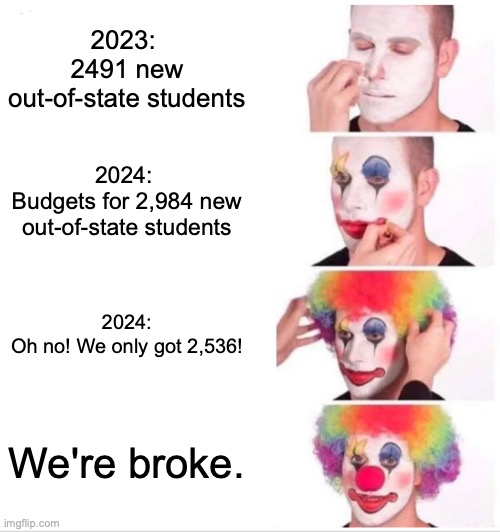Much of this information is from an article in the student newspaper, the Daily Emerald.
The administration is claiming a deficit because out-of-state enrollment did not meet targets. Let’s look at those targets.
In 2023 UO admitted 2,491 out-of-state students, presumably after doing everything they could to maximize this number. In 2024 UO admitted 2,536 out-of-state students, a significant increase with a commensurate increase in the educational budget of the university.
This is great news for UO, so why are they claiming poverty after record-breaking out-of-state enrollments? Well, their target for out-of-state students was 2,984. This target was 18% higher than the actual out-of-state enrollments from the year before.

How to evaluate this disconnect between reality and projections?
- Unrealistic expectations
- Poor management of enrollment
- The need to appear poor to the state in order to get more money
The first and third seem the most likely. You see, one of the main jobs of the VP of Finance and Administration is to make the institution appear poor to the state legislature and, to a lesser extent, donors. There is an incentive to obfuscate the true budgetary situation because the state is unlikely to pour more resources into a university whose revenue is growing faster than the economy.
At the end of the day, you cannot count on budget information provided by the administration, and any claim of deficits must be met with a healthy dose of skepticism. If you look at the real numbers and put in place reasonable enrollment targets, you will see that the administration created their budget based on a pipe-dream, and want faculty, staff, students, parents and the state legislature to pay for their purposefully unrealistic planning.
